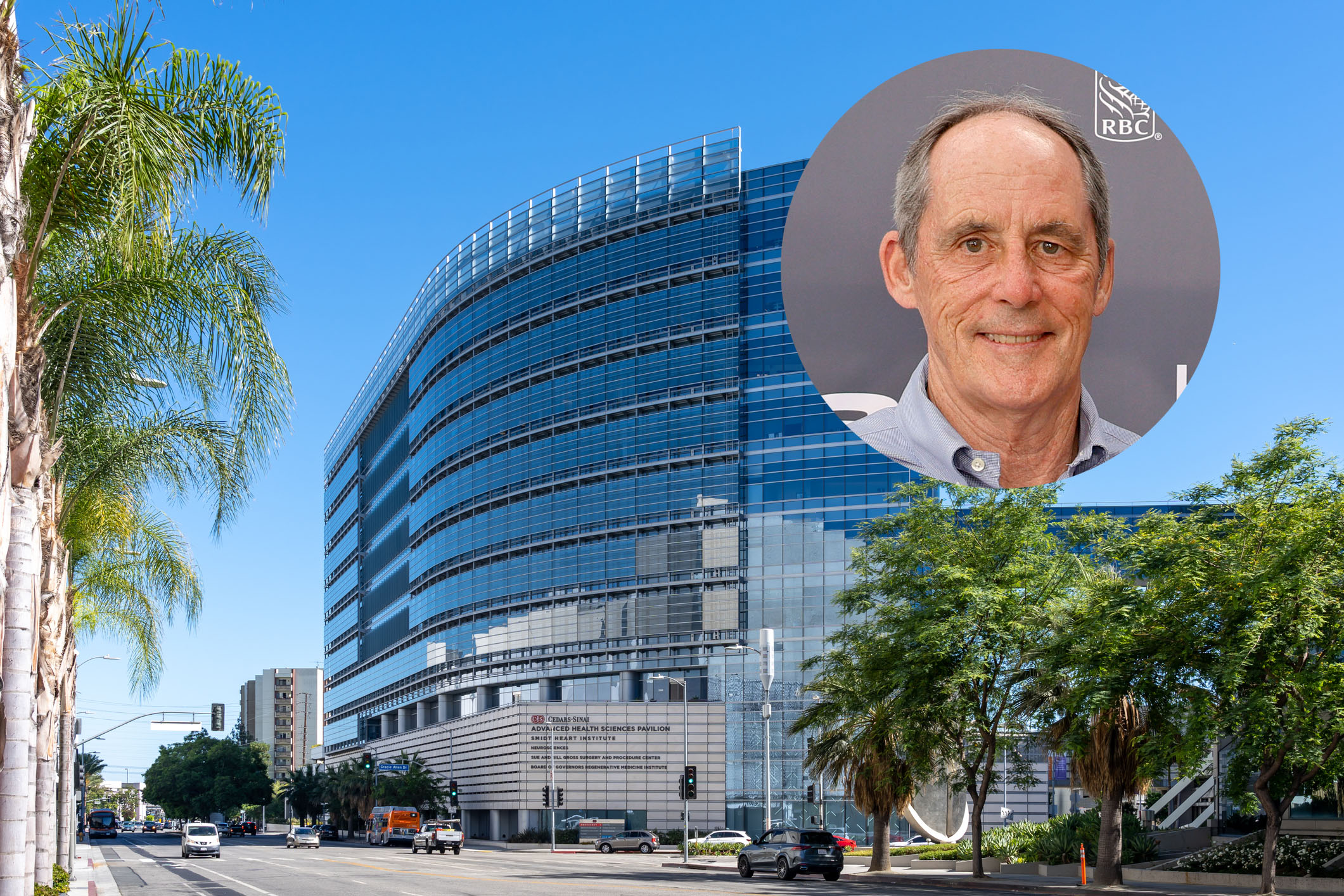
January 17, 1994 was a big day for Tom Priselac. After 15 years as an administrator at Cedars-Sinai, he was set to begin his first day as President and CEO of one of the city’s most important and historic Jewish institutions. But before the sun rose, he was jolted awake by the Northridge earthquake at 4:30 a.m.
I was a private practitioner at Cedars-Sinai with six years under my belt. Awakened abruptly by the earthquake, I quickly dressed and drove to the Medical Center to check on my patients. The towers had separated, revealing the ground far below. Auxiliary power provided only dim lighting. Broken pipes dripped water from the ceilings. The usually immaculate hospital felt like a damp cave.
That day has become part of Tom Priselac lore. His staff soon donned “I survived Tom Priselac’s first day” T-shirts. But Cedars-Sinai did far more than survive. Under Tom’s leadership it solidified its place among the best academic healthcare institutions in the U.S. in ways that would have seemed improbable on that January day. Along with thousands of physicians, pharmacists, nurses and others, I’ve been fortunate to have a front-row seat.
During three decades as CEO, Tom built a healthcare enterprise that stretches broadly across the southland. During that time Cedars-Sinai added the 120 ICU and 30 post-surgical beds in the Saperstein Critical Care Tower. In a strange happenstance, I admitted the Tower’s first patient. Leaving that patient’s room, I spied Tom, looking slightly anxious about opening the new facility. He extended a hand to congratulate me for participating in this milestone event. Tom also presided over the development of the gleaming Advanced Health Sciences Pavilion with new clinical, surgical and research facilities.
As impressive as the campus has become, Tom’s most important contributions were elsewhere. During the 1990s, increasing medical costs and new technology called for more efficient and effective care. As most of us spend only a small fraction of our lives in a hospital, improvement meant coordinating outpatient and hospital care. A first major step in that direction was the acquisition of the Cedars-Sinai Medical Group in Tom’s first year. Later that year I became the first community physician to join the group. Since then, I’ve seen Tom’s team transform a single-site hospital into a full-fledged medical network with 16 clinical entities, including Kerlan-Jobe Orthopedics and the Angeles Clinic, among others.
Tom’s personal approach to growth can be seen in his frequent use of the term “pluralism.” It reflects modesty in recognizing that in healthcare, as elsewhere, there are different paths to success. Consequently, Cedars-Sinai promoted multiple models. Some physicians became employees, while others contracted through the provider network. Marina del Rey Hospital became wholly owned, while Tarzana Medical Center became a joint venture with Providence. Huntington Memorial and Torrance Memorial Hospitals became network affiliates. Under Tom Priselac, it was never “one size fits all.”
Another trademark of the Priselac era was the culture of continuous improvement. The system created numerous quality programs that reduced surgical wound infections, hospital readmissions and addressed scores of quality metrics. Despite great efforts, not every initiative went well. The 2011 closure of Cedars-Sinai’s psychiatry facility and its residency program created controversy that persists to this day. The transition to an electronic record proved a long-term challenge for the institution. And more recently we were hit by a tidal wave of critically ill COVID-19 patients that tested the limits of the facility and its over-worked staff.
During difficult times as well as good ones, we’ve benefitted from Tom’s profound steadiness and the confidence that patient and staff welfare remains leadership’s “true north.” He’s upheld and promoted our dedication to the founders’ Jewish values. We’ve also felt great pride that Tom, while president of the American Hospital Association, participated in the planning of the Affordable Care Act, making health care available for millions.
With Tom’s retirement, the staff will miss his regular sojourns through the medical center and seeing him in line at Starbucks with the employees. At one recent medical group board meeting, we reviewed Tom’s tenure and presented him with a cake featuring appropriately side-by-side images of both him and Cedars-Sinai. An uncharacteristic lilt came to Tom’s voice and the hint of a tear to his eye.
Cedars-Sinai’s campus will never rival the California Coast in the hearts of Angelenos. It can never compete with the hoopla of entertainment and Hollywood. Still, thanks to Tom’s leadership, Cedars-Sinai will remain among the crown jewels of our city and of national healthcare. His efforts will make a difference for generations to come.
Dr. Daniel Stone is Regional Medical Director of Cedars-Sinai Valley Network and a practicing internist and geriatrician with Cedars Sinai Medical Group. The views expressed in this column do not necessarily reflect those of Cedars-Sinai.






















 More news and opinions than at a Shabbat dinner, right in your inbox.
More news and opinions than at a Shabbat dinner, right in your inbox.